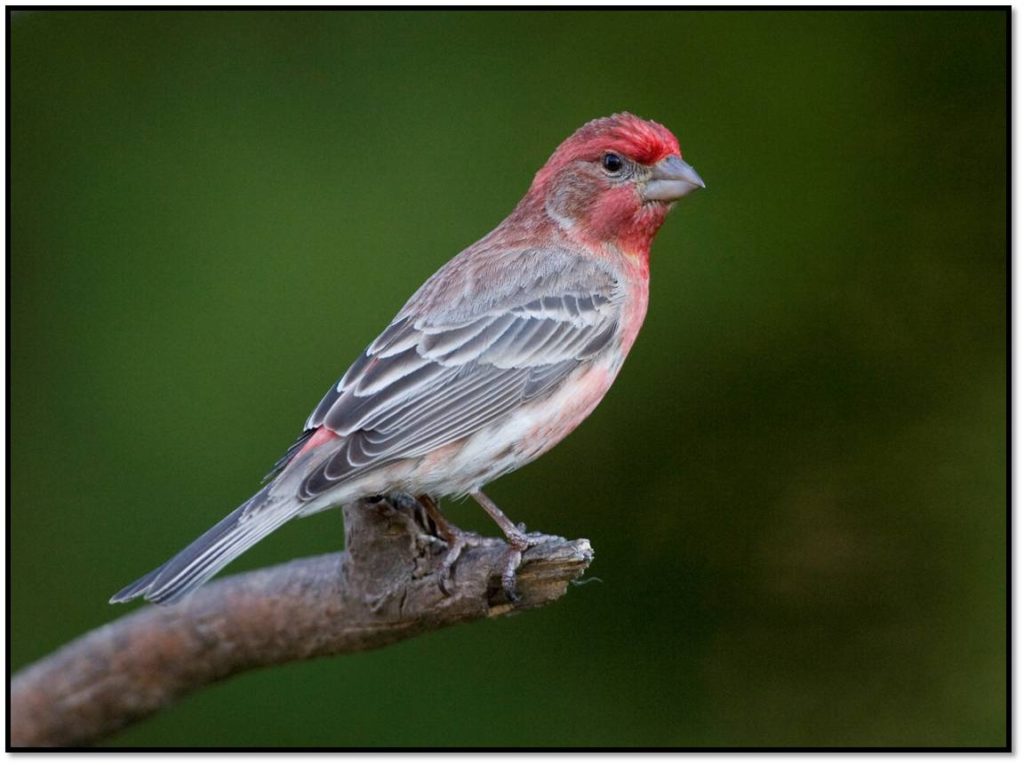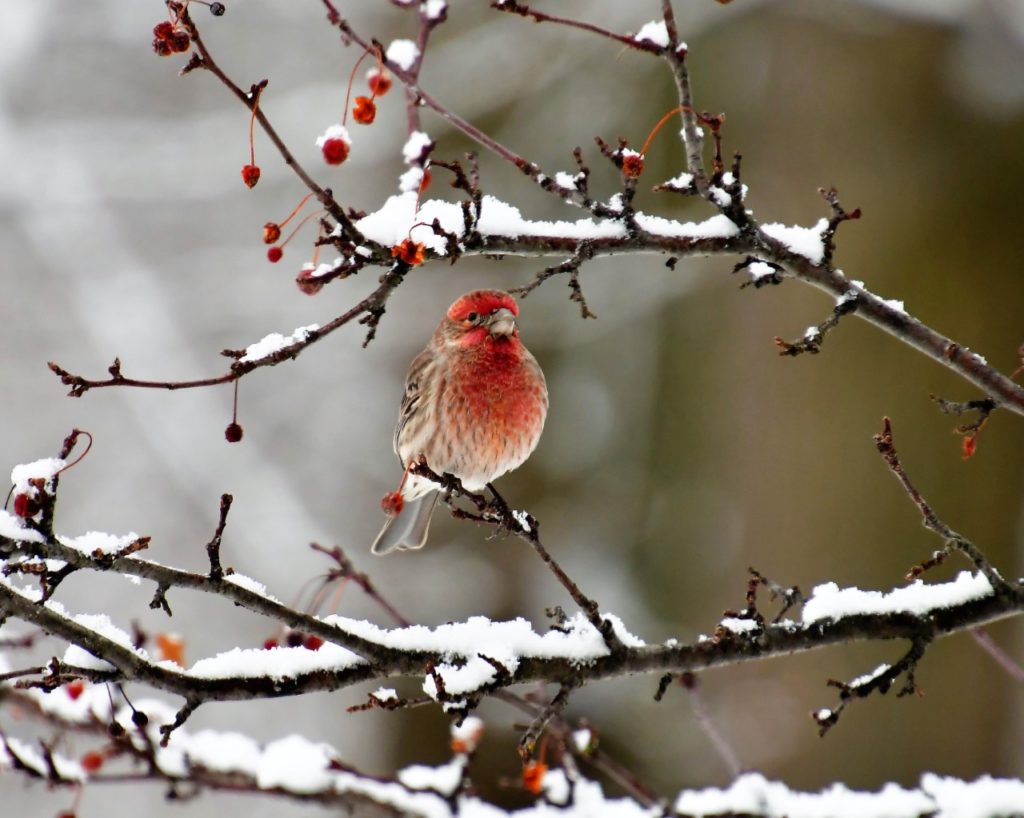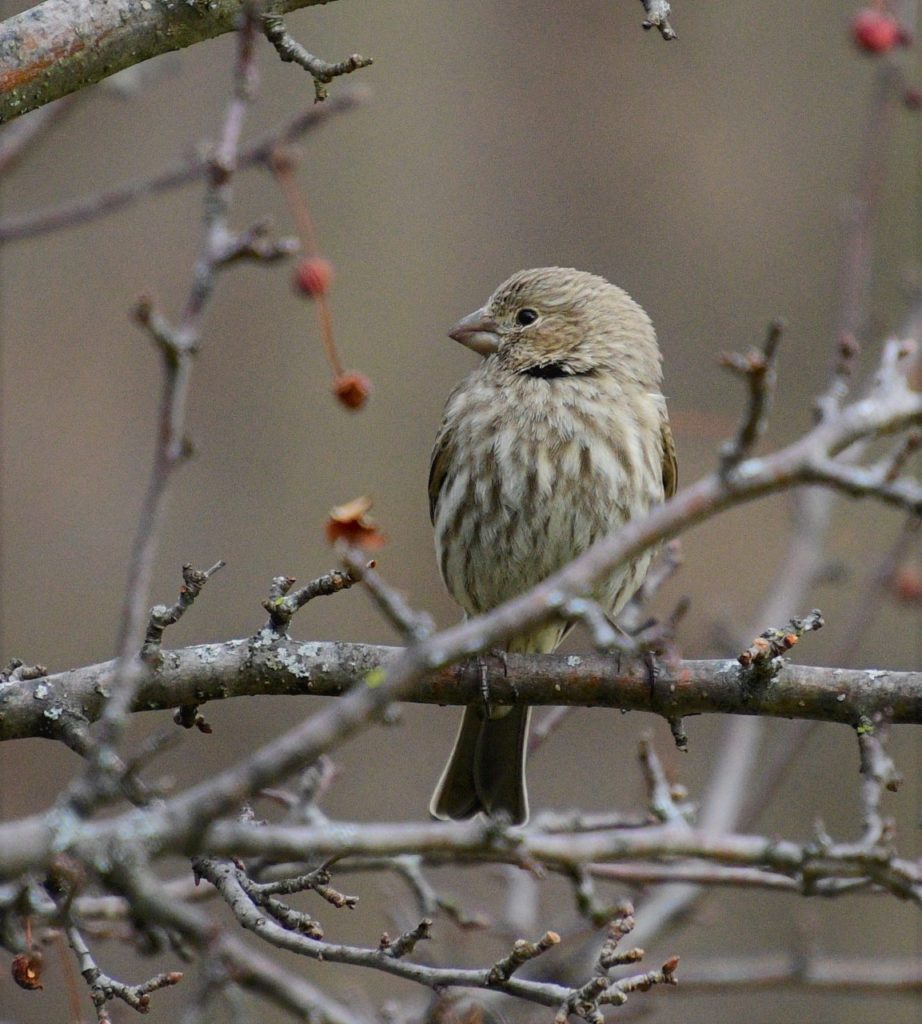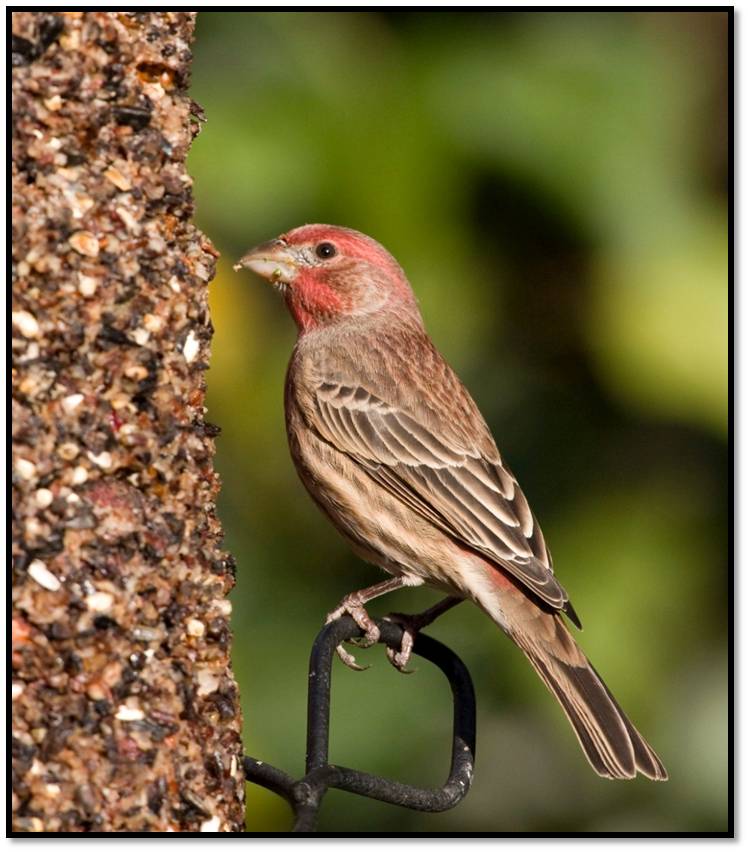
House Finch male (Photo by John Graffius)
One of the most surprising facts about House Finches is that they are not native to the Eastern United States. They were originally found only in the western U.S. and Mexico. In the 1940’s, humans intervened, capturing a small group of these birds to sell on Long Island as pets. After the sellers got caught, the finches were released, leading to their eventual expansion.
House Finches “Branch Out”
Taking advantage of the friendly habitat, House Finches bred and have since become one of our most populous birds, with an estimated 267 million to 1.4 billion individuals. Their presence is always a welcome addition. Their songs are cheery and melodious and their colors warm and beautiful.

House Finch male (Photo by Tim Lintz)
Fun Facts
The red coloration of the breast and eye-stripe in the males comes from pigments contained in their diet, which consists of nuts and seeds. House Finches dine enthusiastically on dandelion seeds, their bright red plumage contrasting against the yellow blooms – a cheery sight indeed! Females prefer to mate with the brightest, reddest males. Females are much less conspicuous, an overall gray-brown color with indistinct streaks. According to bird banding data, the oldest known living House Finch was a female, reaching 11 years and 7 months.

House Finch female (Photo by Tim Lintz)
Nesting
According to the book, Birds of Michigan, the first House Finch nest was found in Southfield, MI in July of 1981. House Finches are very adaptable when it comes to nesting, building in trees and shrubs near human habitation and, to the delight of many homeowners, even on door wreaths! Their nests are constructed of grass, twigs, leaves, hair and feathers. Leave plant material in the yard this spring instead of cleaning up, and place hair and feathers in suet baskets to help House Finches create their nests.
Nesting begins in late March and can continue through August. The females lay 4-5 eggs which they incubate for 12-14 days. House Finches breed 2-3 times per breeding season. The young fledge from the nest approximately 9-11 days after hatching. This is one of the few bird species that feeds their young only plant matter, as opposed to adding insects, a common food source for most fledglings.
Attracting House Finches
House Finches are frequent feeder birds; attract them by offering Sunflower Seed (either in or out of the shell). These birds are adaptable enough to also eat Safflower or Nyjer Seed (thistle). For some reason, this species is more prone to conjunctivitis than other species of birds – a good reminder to keep those feeders clean! Sterilize feeders using either vinegar (my personal preference) or a diluted bleach solution. Rake areas under feeders (if offering seeds with shells) to prevent the spread of disease, especially since House Finches are known to feed from the ground. Better yet, use Sunflower Chips (sunflower out of the shell) and add a tray under your feeders so the area stays relatively mess-free.

House Finch on a Seed Cylinder (Photo by John Graffius)
As the days get longer and the sunlight prompts territorial song, listen for the cheery, long song of House Finches, a welcome addition to any yard (click here to listen)!
Enjoy your birds!
-Rosann Kovalcik
Owner, Wild Birds Unlimited, Grosse Pointe Woods
Have you joined our email list? Click here to sign up, it’s free and gives you access to sales, coupons, nature news, events, and more!
